| T O P I C R E V I E W |
| mark143 |
Posted - 21/08/2013 : 20:56:09
I asked in the wrong section a couple of weeks ago but got a couple of answers.
I've now got a couple more better photos of Sid.
As i said before, he was sold as an Amel Motley.
Opinions please.
Thanks.
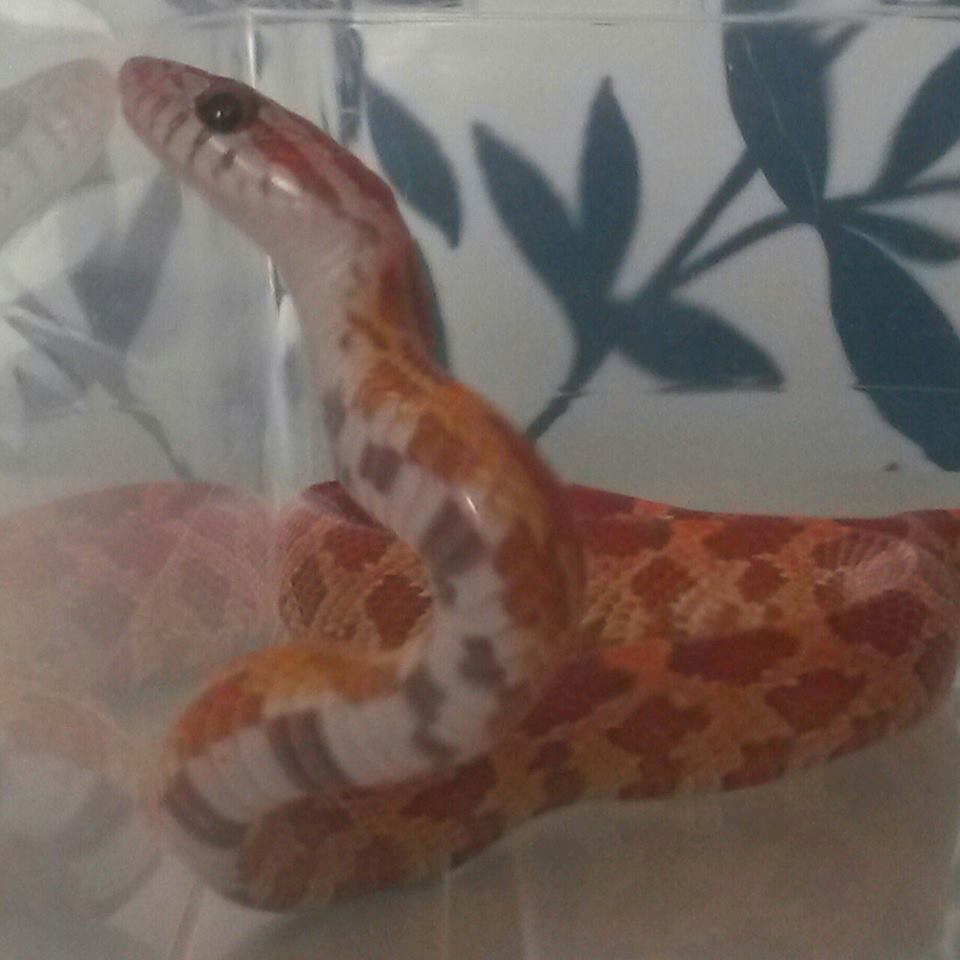
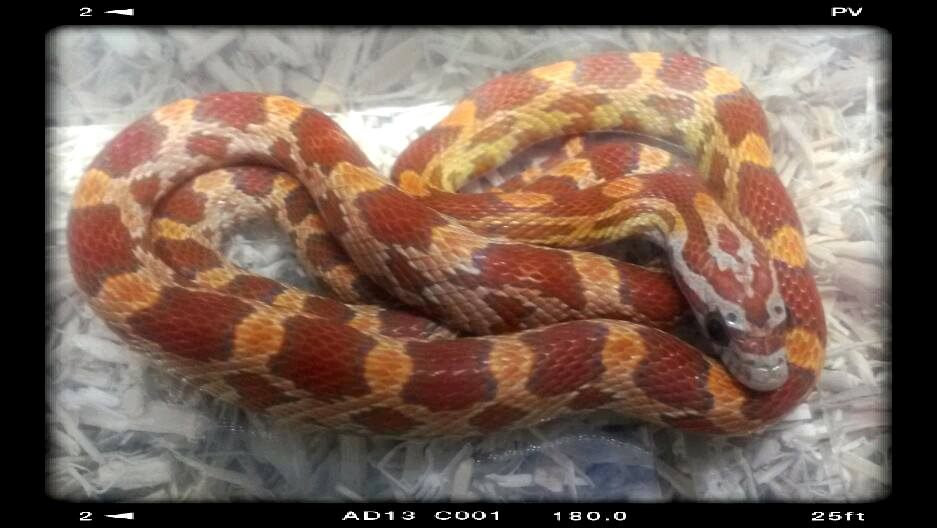
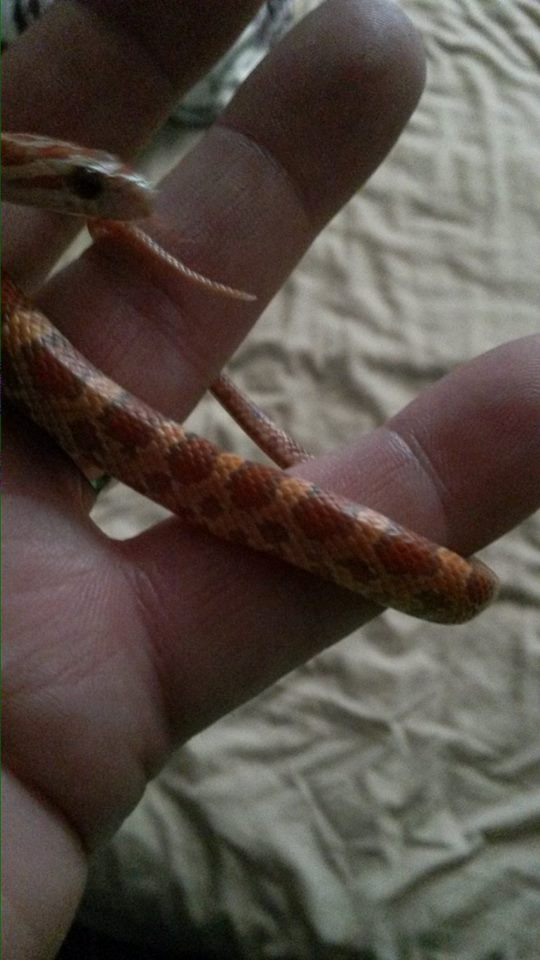

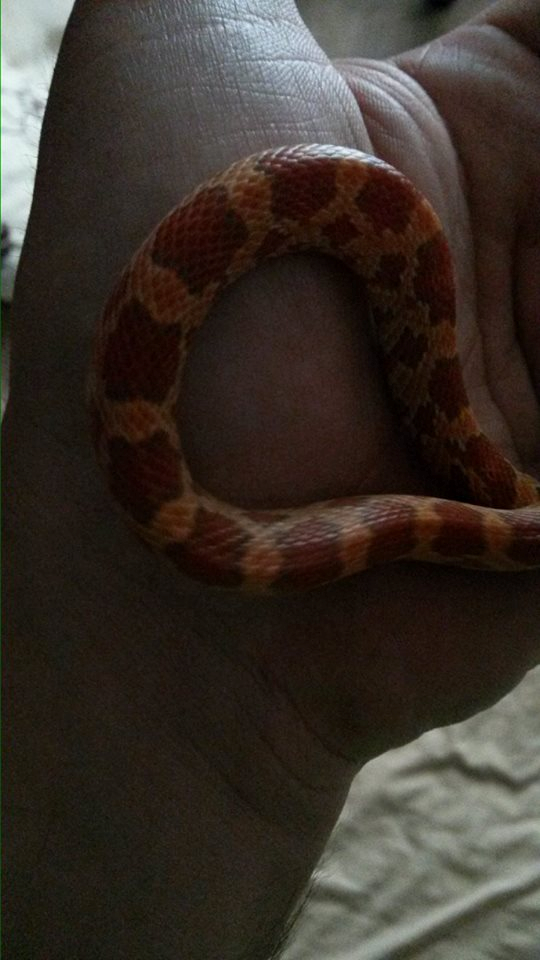 |
| 20 L A T E S T R E P L I E S (Newest First) |
| Razee |
Posted - 24/08/2013 : 21:24:28
P.S. Sorry if the previous post comes across as too opinionated. As eeji said, we need much more information, and until then, it's all it is, just an opinion/ guesswork. |
| Razee |
Posted - 24/08/2013 : 21:07:29
It is true, though amels, aneries, etc. do crop up in most snakes... I tried to read the whole debate on the other forum ( as you can probably tell :-) ) and must admit, there are some valid points on both sides. I suppose we'll never know, without completely sequencing the whole genome of a corn snake and other snakes.
I've actually asked about this at work once - long time ago. I work at Bioscience dept at Uni, so asked one of our genetic scientists about whether it would be possible to find out, if a corn snake is a pure corn, or a hybrid. I'm not a scientist, just technician, so sorry if I get it wrong - but what I understood was, that someone would have to first sequence the complete genetic make up of a pure corn snake, then do the same for another, let's say grey rat snake, and then find out, which genes/ sequences are different.
This would cost phenomenal amounts of money, and no one would ever finance the research... so, at least for some time, we won't know for sure.
For myself, I don' t care if they are hybrids, or not. I like gold dusts, and would love to have one - but if I ever bred it, I'd make sure I'd tell any buyers of the hatchies about the ultra gene.
I'm going to keep an open mind on the tessera business :-) |
| eeji |
Posted - 24/08/2013 : 19:48:43
if you think back to the first amel corn, that was so very different and the same can be said for any other morph. When the first stripe popped up was that also labelled as hybrid because it was different to a regular corn but other ratsnakes have a stripe pattern? Bold claims indeed, but more information is needed. |
| mjpeters |
Posted - 24/08/2013 : 17:18:00
quote:
Originally posted by Razee
To be honest, if you think about it - the strongly variable belly pattern of tesseras IS a bit strange. Also, if such a dominat gene existed anywhere in nature, we would be seeing it in the wild more...
I very secretly think palmetto is also a hybrid ( natural ) with another type of rat snake - it looks very much like a leucistic gene, not seen in corns so far...not that I care, I would have a palmetto, if I could :-)
I read the South Mountain Reptiles web page, and all the debate about how all the experienced breeders agreed that palmetto is definitely a corn, but I still have secret doubts... Ok, I'll get my coat....
I also have very "unfashionable" views about Palmettos,but then I have a Blue Eyed Leucistic Texas Rat Snake that has a sprinkling of "normal" coloured scales....and yes I too would have a Palmetto if offered to me and yes I've put a deposit down on a Multicorn Tessera-If I like a Snake-then I like a snake.
I believe Respect (and £££££'s)are due to the breeder that took the time and heartache of breeding whichever snake you choose to buy,perhaps more focus should be on the snake rather than its origins? |
| Razee |
Posted - 24/08/2013 : 16:58:59
To be honest, if you think about it - the strongly variable belly pattern of tesseras IS a bit strange. Also, if such a dominat gene existed anywhere in nature, we would be seeing it in the wild more...
I very secretly think palmetto is also a hybrid ( natural ) with another type of rat snake - it looks very much like a leucistic gene, not seen in corns so far...not that I care, I would have a palmetto, if I could :-)
I read the South Mountain Reptiles web page, and all the debate about how all the experienced breeders agreed that palmetto is definitely a corn, but I still have secret doubts... Ok, I'll get my coat....
|
| Razee |
Posted - 24/08/2013 : 16:49:54
Mj, that link you posted on your other thread (about Sarums tummy chequers ) - there's the debate about the tesseras possibly being a hybrid there...? |
| mjpeters |
Posted - 24/08/2013 : 14:15:32
quote:
Originally posted by eeji
quote:
Originally posted by oakleyman18
MJ- Tessera has just been proven out as a Hybrid :) Just FYI!
more info please!
Ditto! |
| eeji |
Posted - 24/08/2013 : 14:08:04
quote:
Originally posted by oakleyman18
MJ- Tessera has just been proven out as a Hybrid :) Just FYI!
more info please! |
| AcidicAngel |
Posted - 23/08/2013 : 22:58:56
I know lol... I have considered but I didn't believe it at first... Now that it's proven... |
| mjpeters |
Posted - 23/08/2013 : 22:51:21
quote:
Originally posted by AcidicAngel
That's a Jungle Corn Mj, I was just looking at that thread actually lol.
now check this out!http://i1298.photobucket.com/albums/ag57/meg_peters2/JungleNormal20100122003_zps788e8b12.jpg
and this is the type of snake quoted at the end of the article;
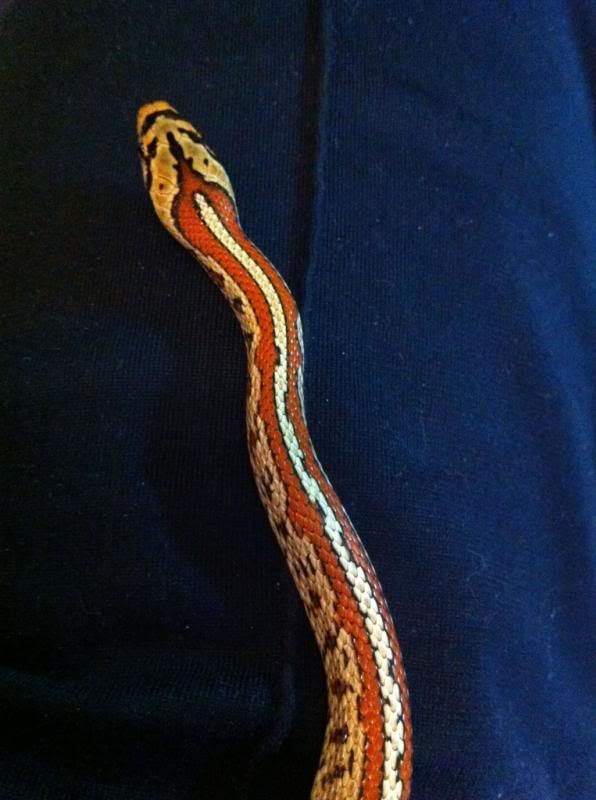
this is a European ratsnake-striped morph of leopard snake.
|
| AcidicAngel |
Posted - 23/08/2013 : 22:41:05
That's a Jungle Corn Mj, I was just looking at that thread actually lol. |
| mjpeters |
Posted - 23/08/2013 : 22:39:00
quote:
Originally posted by oakleyman18
MJ- Tessera has just been proven out as a Hybrid :) Just FYI!
wot like this one? I Posted this some time ago...
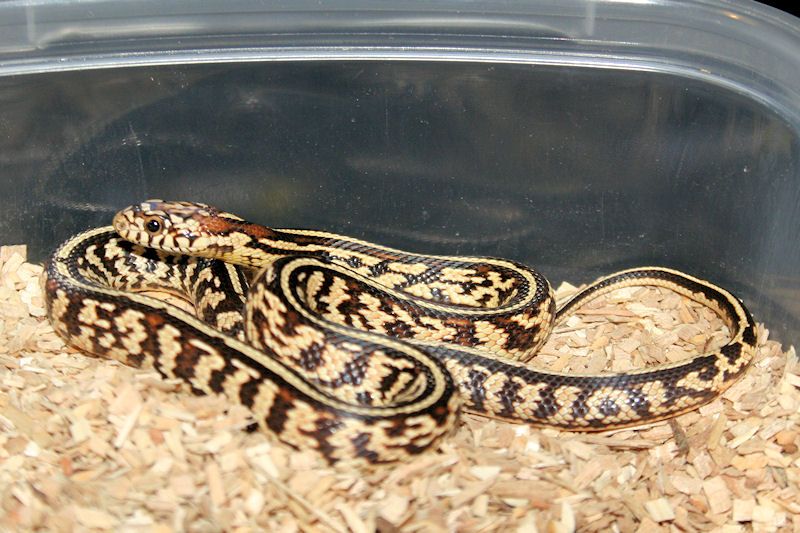
well,who? how? where? when? link please??
|
| AcidicAngel |
Posted - 23/08/2013 : 22:11:47
quote:
Originally posted by oakleyman18
MJ- Tessera has just been proven out as a Hybrid :) Just FYI!
Wait... What?! |
| oakleyman18 |
Posted - 23/08/2013 : 22:09:54
MJ- Tessera has just been proven out as a Hybrid :) Just FYI! |
| AcidicAngel |
Posted - 23/08/2013 : 22:09:43
Ah... Eeji, you confused me  I never knew about Ultra/Ultramel till seeing it on your Morph guide and so I've believed since first seeing it that it was a hybrid XD Sorry about that mark I never knew about Ultra/Ultramel till seeing it on your Morph guide and so I've believed since first seeing it that it was a hybrid XD Sorry about that mark  My bad. My bad.
Though everyone has brought to my attention that my corns could indeed be hybrids... Sakana does have quite a "long" head for a corn snake as I have noticed before. I've also been told her size, saddle shape and overall behaviour mean she's a hybrid.... |
| mjpeters |
Posted - 23/08/2013 : 21:37:34
quote:
Originally posted by eeji
quote:
Originally posted by Razee
...it would be more appropriate to call the snakes P. guttatus "domesticus"...
Thats not a bad idea, there are loads of species that have borrowed mutations from others, eg. all P. slowinskii morphs come from corns, most honduran milksnakes in the trade (morphed or not) are not pure L.t. hondurensis, some of the albino milksnakes have been created by crossing the albino gene in from other species etc etc etc
I have for a loooong time thought that!! especially with some of the 'pattern morphs'I know its possibly NOT a popular viewpoint but there are many other snakes that look very-for example-stripey/Tessera'ish.
Please don't misunderstand me-I am not for even a millisecond suggesting any deliberate cross breeding-it can take take many many generations for a gene to disappear after its in a captive bred population.If that gene alters colour/pattern in a way folks like then the chances are it will be selected for not against,then like the ultra its here to stay! |
| eeji |
Posted - 23/08/2013 : 20:31:51
quote:
Originally posted by Razee
...it would be more appropriate to call the snakes P. guttatus "domesticus"...
Thats not a bad idea, there are loads of species that have borrowed mutations from others, eg. all P. slowinskii morphs come from corns, most honduran milksnakes in the trade (morphed or not) are not pure L.t. hondurensis, some of the albino milksnakes have been created by crossing the albino gene in from other species etc etc etc |
| Razee |
Posted - 23/08/2013 : 10:16:26
See - this is a very interesting debate, and I'm fully in agreement with mj on the Ultra gene ( and with eeji ). I always thought it'd be more precise, having the ultra gene combos among other corn snakes ( you used to , I think ), but perhaps with an asterix, explaining the origins of the ultra gene, as all the US breeders list them under corn snakes, anyway. The percentage of gray rat genes in them must be now minute. I'm all for being honest, and precise, but the problem is, so many people in the past haven't been, that the genes are now pretty far spread. Which brings me to the main question - how many of us can really, really 100% say we have a 100% pure corn snake, anyway?
How many people breed, for example from a creamsicle ( maybe even not realizing it is a creamsicle ), get amel looking babies, sell them to dealers, they are sold on to garden centers and Pets at Home, etc as amels, we buy them and breed them as amels... there are also so many so called breeders and pet shops, that haven't got the basic clue about even the most basic morphs. I saw a normal motley being sold as amel motley, the ugliest possible adult carolina being sold as an okeetee, baby carolinas being sold as anery... I could go on.
Because of this, I bet you, quite a high percentage of captive bred corn snakes in pet trade nowadays will have some genes in them, that are not originally corn, even if it's just 1%
I read an interesting thought in a Czech corn snake book regarding this - the author argues that because of the above mentioned, it would be more appropriate to call the snakes P. guttatus "domesticus" ( bit tongue in cheek ), as most are now not 100% pure corns, and have been captive bred , and inbred to get various morphs, for so many generations, they don't actually have that much in common with the original, wild corn snakes. Bit overdone, but there's some truth in it, I think. |
| oakleyman18 |
Posted - 23/08/2013 : 08:42:49
I agree with Eeji on this- Ultra isn't the RESULT of a cross, more that it was first noticed in one I do believe. Also agree that ultra is now widely dispersed in corns, and corns which are for example ultramel, are a very low % of ratsnake.
However, I think there's a responsibility on the behalf of any breeder to let the public know what they are buying. You personally might label everything correctly, but there are a lot of people who don't label correctly, and this has been proven especially widespread this year, with so many creamsicles and jungles etc misrepresented. Then follows the awkward conversations on pages and topics where people get upset and refuse to believe they have hybrids, and it all gets nasty. Then the gene pool gets diluted further...
For a majority of cases I would agree it's not needed. Correct labelling as homo/het ultra should be enough for people to realise, but reality is that not everyone understands genetics as well as some of us on here, so I think it's up to us to lead by example.. :)
|
| eeji |
Posted - 22/08/2013 : 23:38:29
Grey rats and corns range don't overlap so its unlikely that there would be any natural intergrade.
It is a bit misleading of me to bunch ultra in with the hybrids because simply crossing a grey rat with a corn does not produce an ultra. Its been the source of much debate of how they should be listed, and myself personally don't like where they sit at present so they may be moved out of the hybrid section but still retain the information of the morphs origin. |
|
|

